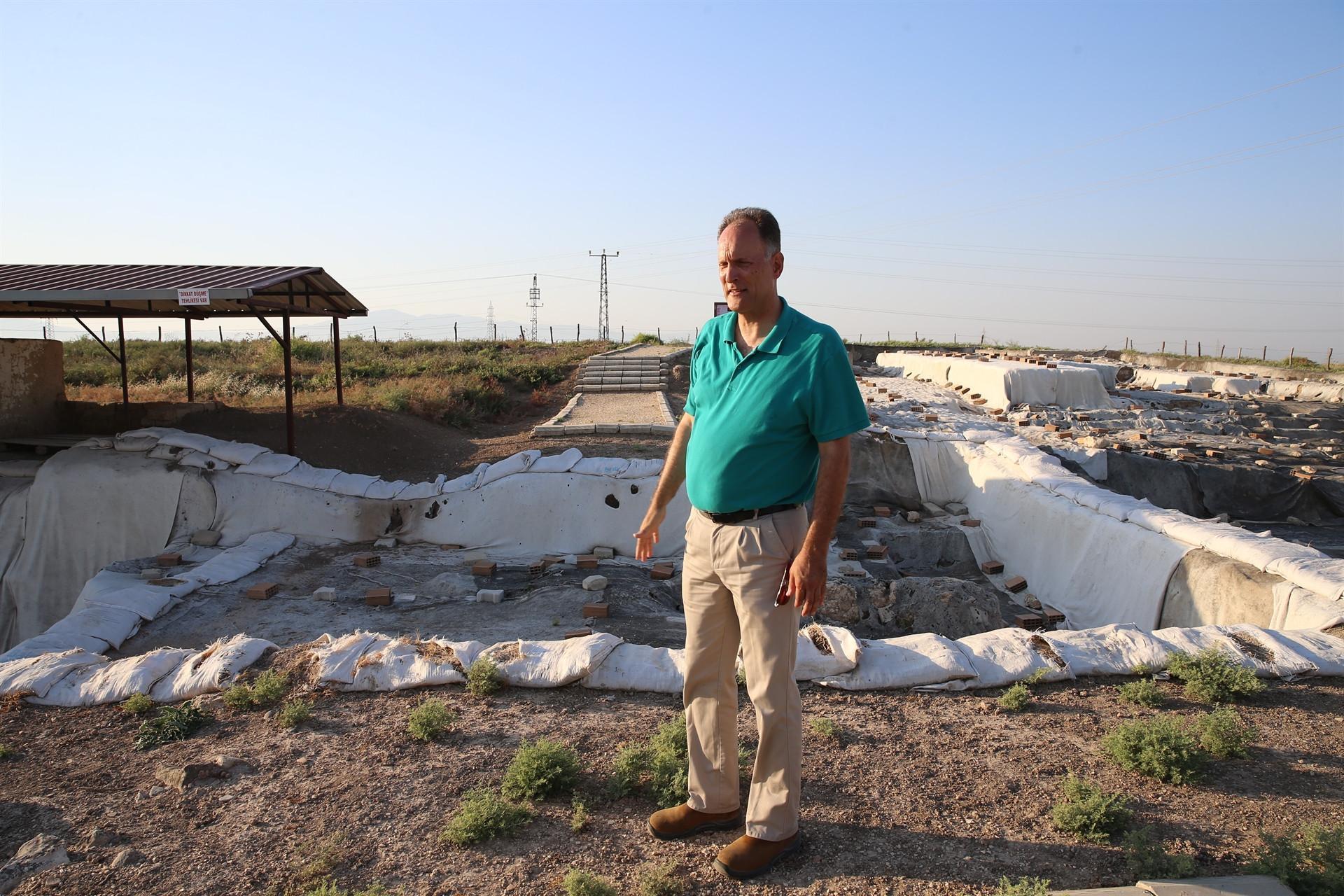Canadian archaeologist dedicates his life to Tayinat Mound
HATAY

Timothy Harrison, a professor of Near and Far East Civilizations at the University of Toronto, has been unearthing many artifacts that shed light on history for 17 years at Tayinat Mound in the southern province of Hatay.
Harrison, who has been tracing the history of humanity since 2004 in the excavation area of Tayinat Mound in Reyhanlı district, devoted his life to this excavation.
Coming to Turkey from Canada every year for the seasonal excavations, Harrison works with his team to discover artifacts that will shed light on history in Tayinat.
The team, led by Harrison, also unearthed the 1.5-meter statue of King Suppiluliuma, who ruled in Tayinat in the ninth century A.D. The statue, featuring the king holding a spear in one hand and a spike in the other, became a symbol of the city in 2012 and is on display at the Hatay Archaeology Museum.
Harrison also unearthed another statue in the mound in 2017, which was determined to belong to the Late Hittite period in the ninth century B.C. and is presumed to be the wife of King Suppiluliuma. He has been continuing the efforts to unfold the history of the city to this day.
Speaking to the state-run Anadolu Agency, Harrison said he had participated in many excavations in different parts of the world for 35 years.
Noting that he has been the head of the excavation team in Tayinat for the last 17 years, Harrison expressed his pleasure to be in Turkey.
Stating that it is a great honor to excavate in Hatay, which has hosted many civilizations, Harrison said that during the excavations carried out under his leadership, they unearthed many artifacts from treaty tablets to sculptures.
“Archaeologists and students from the U.S., England, Germany, Belgium, France and Middle East countries participate in the excavations in addition to the Turkish teams. As a result of our meticulous work in the region, we have unearthed many works of art, including temples, sculptures and palaces. If we count ceramics, botanical finds, organic remains and stone artifacts, thousands of artifacts were found during the excavations. Some of these artifacts are kept in the Hatay Archaeology Museum and some in the excavation warehouses for studies.”
Emphasizing that he wants to participate in the excavations in the mound as long as he lives, Harrison said: “Very little of the mysteries and artifacts in this mound have yet been revealed. Excavations here will take many years. We believe that more different artifacts will be unearthed at Tayinat Mound. We think that King Suppiluliuma’s palace is located on an area of 4,000 square meters under an empty ginnery in the area. We hope to unearth Suppiluliuma’s palace in the future.”

















